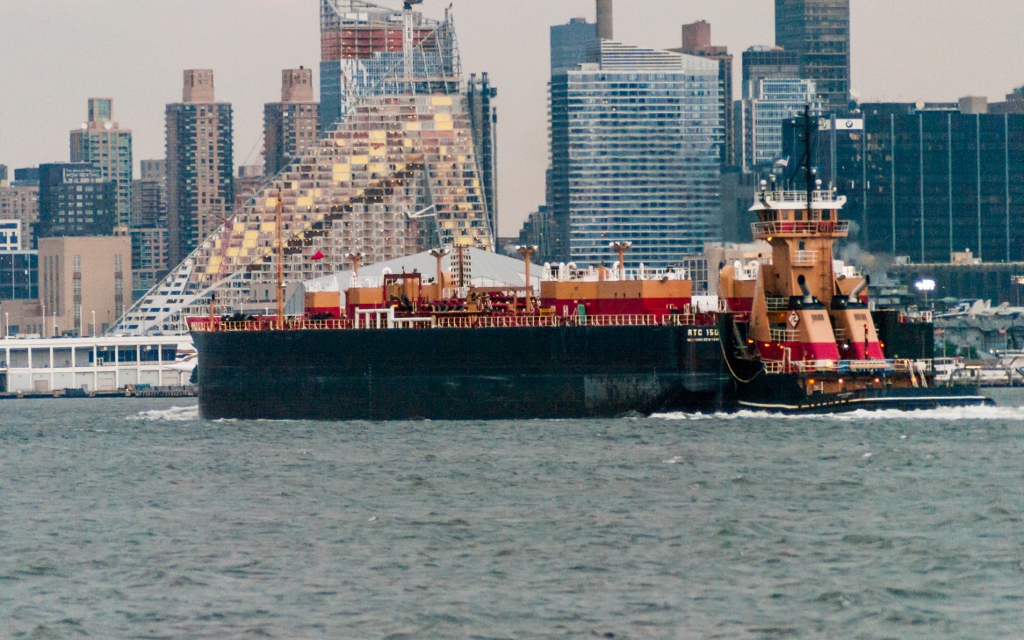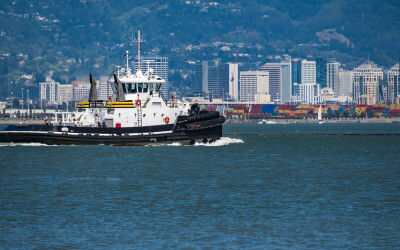A Coast Guard plan for up to 10 designated commercial vessel and barge anchorages along New York’s Hudson River is drawing opposition from river towns and pressure from the state's U.S. senators
Senators Charles Schumer and Kirsten Gillibrand, both D-N.Y., are calling for more public hearings on the proposal. They asked the Coast Guard last week to schedule public hearings so riverfront residents, local public officials and environmental groups can present their positions.
The conflict could ramp up into another battle by regional and national environmental groups to block new routes for Bakken shale crude oil to East Coast refineries. Proposals for pipelines, rail car tank service, and barges have all drawn fire from activist groups.
“What is driving this? If it is, as industry has stated, an anticipated, enormous increase in crude oil transport south from Albany, we must oppose this anchorage request,” John Lipscomb, a captain with Riverkeeper, wrote on the environmental group's summary of opposition. “We will oppose any effort to increase the volume of crude oil moving on the Hudson.”
Local political leaders critical of the plan couch it as a threat to quality of life and economic redevelopment on their waterfronts.
“Yonkers objects to this proposal which will lead to the re-industrialization of our pristine Hudson Riverfront and reverse the momentum of our waterfront revitalization as evidenced by over $1 billion in new economic development,” said Yonkers Mayor Michael Spano. “We anticipate the proposed anchorages would turn our portion of the Hudson River into a parking lot for potentially volatile substances.”
The Coast Guard’s notification of the anchorages proposal had set a June 30 deadline for requesting public hearings. The regulation docket is still open for comments until Sept. 7.
The plan came about because of an October 2015 Marine Safety Information Bulletin issued by the Coast Guard Sector New York, advising vessel operators they could only anchor in seven federally designated anchorage areas on the Hudson River.
That set off alarm bells in the industry, after years of informally anchoring in places as customer demand and traffic grew on the river.
"As custom and practice, the tug and barge Industry has been anchoring outside of federally designated anchorage grounds in the Hudson River for decades," the Maritime Association of the Port of NY/NJ tug and barge committee wrote in a January 2016 letter to the Coast Guard, with recommendations for formalizing the anchorages. Of the existing federally designated anchorages, “only one is within the 109 nautical miles from Yonkers, New York, to the Port of Albany. The capacity and availability of these anchorages is woefully inadequate to support marine trade,” the group wrote.
Albany is now a hub for shipping crude oil from the Bakken shale formations of the Dakotas and ethanol from the Midwest and with anticipated future growth the industry may need as many as 30 designated river anchorages, according to the Maritime Association.
The existing anchorage areas at Yonkers and Edgewater, N.J., serve as refuges for vessels from New York Harbor during hurricanes and winter gales, taking in tugs and barges when the upper harbor’s Stapleton and Bay Ridge anchorages are unsafe. All were stuffed to capacity during the back-to-back threats of hurricanes Irene and Sandy in 2011-2012, the committee wrote. They added:
“Additional federally designated anchorages will improve safety…when another storm (or) heavy weather impacts the harbor. Not having sufficient federally designated anchorages is a logistical nightmare and compounded in severe weather when terminals are backed up and lay-berths are shut down.”
Coast Guard officials drew up their proposal after that request, buttressed by similar testimonials from the Hudson River Port Pilot's Association and the American Waterways Operators. The new anchorage grounds would range in size from 74 acres at Milton to 775 acres at Yonkers, in depths from 21’ to 65’ and allowing vessels a swing radius of 1,200’ and at some sites 1,800’.
Industry advocates say anchoring outside of designated areas became a necessity over the last 20 years, with increased vessel traffic, bigger equipment, and shallow draft areas that have developed without enough dredging.
AWO cast the request as a safety need, and downplayed the impact on riverside towns.
“The most common practice is to anchor for four-six hours as the vessels move at daylight or as the tide comes in,” AWO wrote. “Vessels at anchor must remain lit in accordance with Coast Guard requirements, but vessels will often contain their lighting in order to limit impacts on other users both on the water and shoreside.”
While acknowledging that co-existence, the AWO position letter asserted that “Coast Guard policy must not be driven by aesthetics but by safe usage of the waterways. There are many other navigable waterways in the United States where commercial users interface with residents and as the waterways become more congested and population areas expand, it is necessary to ensure that navigation safety continues to be a priority.”
The proposed anchorages would be located at Kingston Flats, Port Ewen, Big Rock Point, Roseton, Milton, Marlboro, Newburgh, Tompkins Cove, Montrose Point, and an extension of the current Yonkers anchoring area.



[5] copy.png.small.400x400.png)

